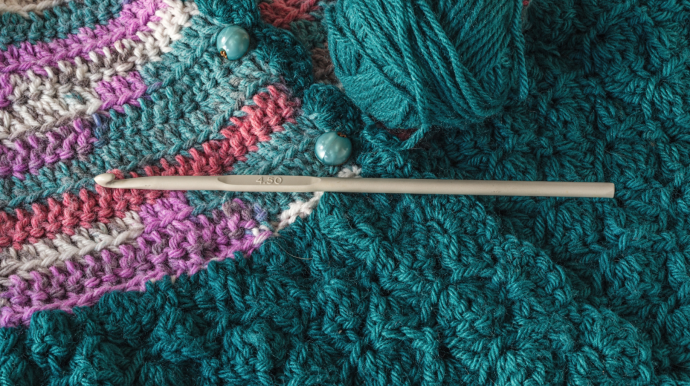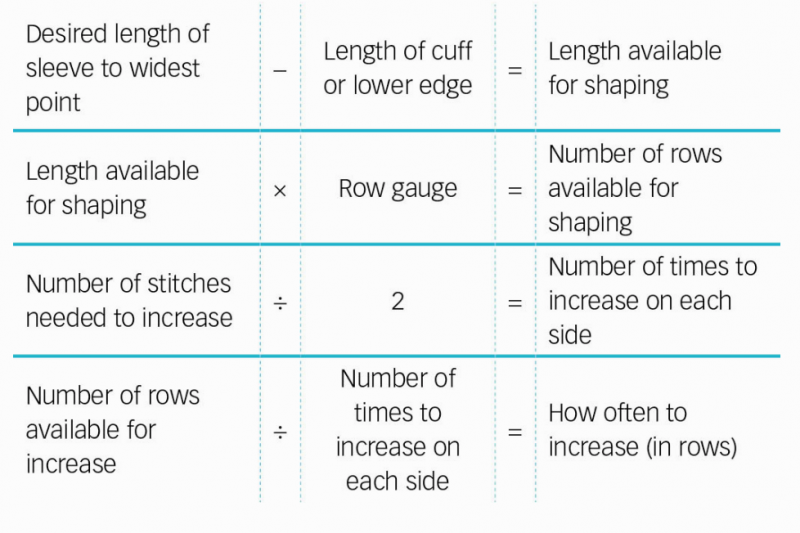Crochet Basics: Common Questions & Answers

Hello, my dear crocheters! I keep answering some of the most common questions you have and to anticipate some questions you didn’t know you had. Today I invite you to learn more about making the size right in your projects, mostly sweaters. We’ll talk about why the body measurements and finished measurements are different in the patterns. You will also learn how take body measurements for a sweater, and what to do if you need to make a sweater shorter or longer, or if you need to change the sleeve length. I hope that this information will lead you down the road to gaining the confidence that makes for good crocheting. My goal in creating this section was to help as many beginners as possible because I know how frustrating it is when your crochet project just isn’t going right. So feel free to leave your questions below! Be sure to make them as detailed as possible, and I will try to help you as best as I can.
Question 1. Why are body measurements and finished measurements different in the pattern?
The difference between the wearer’s body measurements and the finished sweater measurement is called ease. Ease is necessary for a good fit, but it varies according to the style of the sweater and the weight of the yarn. It may also take into account the wearer’s preference for how the garment will fit.
Body-hugging sweaters have little ease, while more casual sweaters and coats have a great deal of ease. The outside measurement of a sweater made with bulky yarns may differ from its measurements inside, next to the body. Since measurements are taken on the outside of the garment, bulky sweaters must have more ease to result in the same fit as a sweater made with thinner yarn.
Question 2. What’s the best way to take body measurements for a sweater?
Measure over your normal undergarments. Measure over the fullest part of your chest/bust, making sure the tape measure is parallel to the floor. Hold the tape so that it is not slack, but don’t pull too tightly, either. Also measure from the bones at the center back of your neck to your wrist with your arm extended horizontally (“Center Back to Cuff” measurement), and across your shoulders from the tip of one shoulder to the tip of the other shoulder (“Cross-Back” measurement). Depending on the garment, you may want to know your upper arm measurement at the widest point, and/or your hip or wrist measurements. For length, measure from the bone at the center back of your neck to your waist or to your desired sweater length.
Question 3. How do I measure a curve when figuring armhole height?
A: You probably don’t have to measure the curve. Even curved armholes and necklines are measured on a straight vertical line from the beginning of the shaping to the top.
Question 4. What if I need to make a sweater shorter or longer?
Unless you are working a complicated stitch pattern in which the row count matters, simply start any armhole shaping sooner (or later) than the pattern suggests. If the stitch pattern is complex, you should probably start the shaping on a repeat of the same row of the pattern as designated. Start neck shaping when the height of the armhole is the same length as that given in the pattern. It is important to keep the distance between the beginning of the armhole shaping and the top of the sweater the same length as the original, because that measurement corresponds to the top-of-sleeve measurement. If you change the length of the armhole, you must also adjust the sleeve cap shaping. When adding length to a sweater, remember that you’ll need more yarn than the pattern calls for.
Question 5. What if I need to change the sleeve length?
Changing sleeve length is a bit more complicated than changing body length, because sleeves are usually shaped from the cuff up to the shoulder. A change in sleeve length without changing the beginning and ending widths requires a change in the intervals between the shaping rows. A longer sleeve has more widely spaced increase rows; increase rows on a shorter sleeve are closer together.
Decide how long your sleeve needs to be. If it is less than an inch shorter than the given sleeve length, you may simply put a couple of the increase rows a bit closer together than the pattern suggests. If you need to make your sleeve just an inch longer, you may modify the pattern and crochet a couple of more rows between two of the increase rows. However, if you need to change the sleeve length by more than about 1 inch, some math is in order:

How often to increase” will probably not be a whole number. Just round it to the nearest whole number and increase that many times, or work increases on rows alternating between the two nearest whole numbers.
Question 6. How do I tell the Left Front from the Right Front of my sweater?
Sweater pieces are described as they are worn, so the “Right Front” of a sweater is the piece for the front right side of your body. “Back Left Shoulder” is the part of the sweater Back that will be on your left shoulder when you wear the sweater. It’s okay to hold pieces up to your body to figure this out!
Question 7. What is the difference between Back and back?
A: Many patterns capitalize the parts of the sweater, so “Back” is a piece of a sweater. Lowercase back, on the other hand, usually refers to the work as you hold it: The “back” of the stitch is the side away from you or the “back” could be the wrong side of the fabric.

This will come in handy when I start learning to make myself some sweaters. I've never done clothing before but I have seen and saved a bunch of pretty cardigans and such as that.
Thank you for the Q&A on this.
Debbie